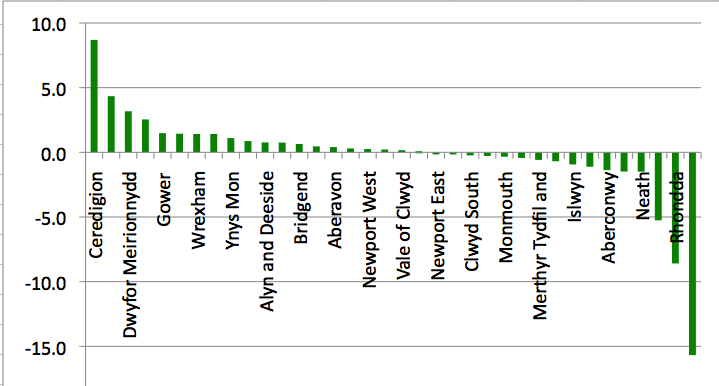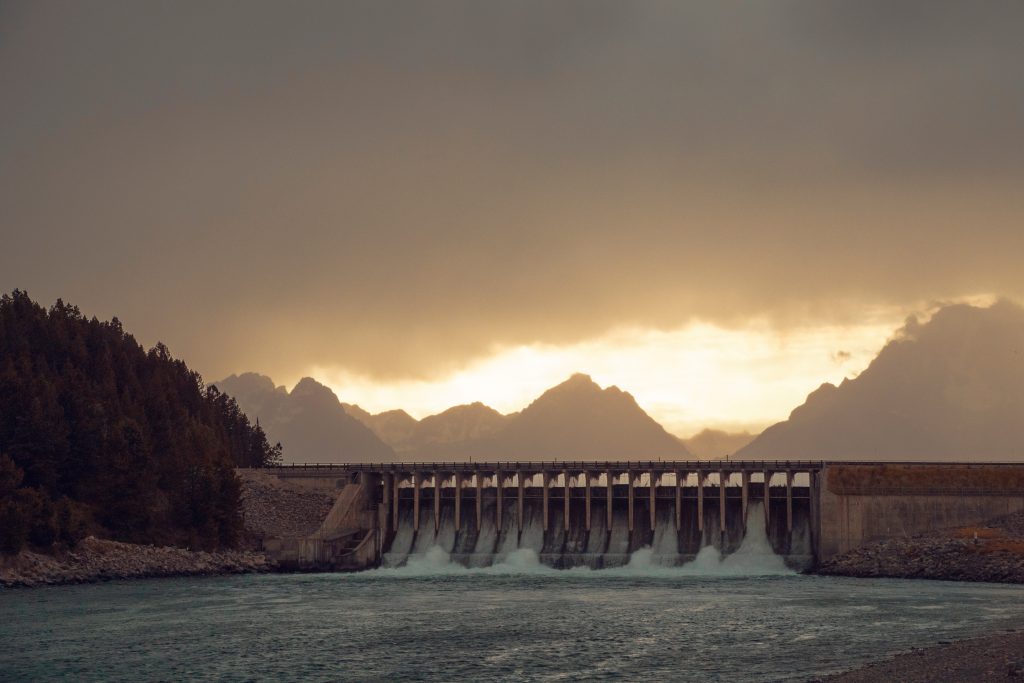Holding steady was an acceptable night for Plaid Cymru but the real question is whether they can push on at the Assembly elections in 2021, writes Dafydd Trystan.
Thursday, 12th of December was a night of mixed emotions for Plaid supporters. On the positive side Plaid held their four seats with a strong performance from Hywel Williams in Arfon and a stunning performance from Ben Lake in Ceredigion. The party failed however in its bid to capture Ynys Mon, and did not secure a second place finish in any constituency in Wales.
The graph below illustrates the change in share of the vote across the country for the party and ranges from the almost 10% growth in Ceredigion to the fall of 15% in Blaenau Gwent.

So what conclusions can we draw about Plaid’s performance and what does this suggest for Plaid’s prospects looking forward to the Senedd election in 2021?
Adam Price reflecting on the results suggested that while Labour’s Red Wall had crumbled in the face of the blue tide, Plaid’s Green Dam had held firm. If one focuses on the seats Plaid held, this is undoubtedly true – but for those candidates outwith the protection of Plaid’s undeniably impressive hydroelectric scheme in the North and West, the blue tide engulfed them just as surely as it did those standing for Labour.
Writing in advance of the election I illustrated Plaid’s electoral challenges with reference to the Plaid optimist and the Plaid pessimist. Given the results of the election, there’s a case to return to these characters to probe what they might think of the results.
The Plaid optimist takes the view that this was a one off election – dominated by Brexit and further animated by the complete unsuitability for high office of Jeremy Corbyn. These were unique circumstances, which will not be repeated in 2021.
Furthermore, the highly effective debate performances by Adam Price during the campaign clearly demonstrate his ability, which will stand him and the party in good stead as people’s minds focus on the battle for the First Minister’s Office between Price and Mark Drakeford.
The Plaid pessimist on the other hand fears that despite the inclement conditions, the party should have been able to demonstrate strong foundations as they build towards 2021. The pessimist focuses on the far end of the graph above and worries that in precisely those seats Price needs to win in 2021 the party fell back – the three biggest falls being in the Rhondda, Blaenau Gwent and Cynon Valley.
While Brexit may not be a dominant issue in 2021, it will no doubt continue to animate politics in the UK and will be a major factor once again in 2021. Furthermore the pessimist is also concerned by the latest polling that shows that Adam Price remains less visible and less popular than his predecessor Leanne Wood.
So which account is right? Rather unsatisfactorily, the truthful answer to that question is that it is too early to tell. But while it is too early to tell, may I suggest three themes the Party might wish to consider as it considers the some 500 days that remain before the Senedd elections:
- Organisation
The results of the 2019 election suggest that there are some questions to consider about the strength (and depth) of the party organisation across Wales. In an election where every vote will count towards the final tally of seats a level of effective organisation is needed everywhere. - Key Messages
Ask most people what the Conservative message was in 2019 and they’ll be able to correctly repeat ‘Get Brexit Done’. What was Plaid’s message – consistently delivered? Now party activists may well be able to recount the slogan and/or key policies but if they haven’t reached the population at large there is a challenge. This challenge is clearer for Plaid given the lack of a significant Welsh media. The need therefore to settle early on a definitive message and to repeat it ad nauseam is crucial. - Leadership
During the 2019 debates we saw glimpses of Adam Price at his absolute best – passionate, articulate and quick-witted. The challenge for Price and the Party more generally is to find a way to deliver that brilliance (and at his best Price is brilliant) to households across Wales consistently, every week from now until the 2021 election. It will require the kind of focus, consistency and determination that Adam himself demonstrated leading the campaign towards the 2007 Assembly election.
2021 does provide a significant opportunity for Plaid. Questions of Brexit and the constitutional future of these Islands will be clearly part of the debate and Plaid should be well positioned to prosper in such debates. However, the 2019 election demonstrates that unless Plaid successfully builds at the very least small ‘hydro-electric schemes’ across the country, the blue tide may once again hinder the party’s progress and ultimately stop Adam Price from becoming Wales’ First Minister.
All articles published on Click on Wales are subject to IWA’s disclaimer.





